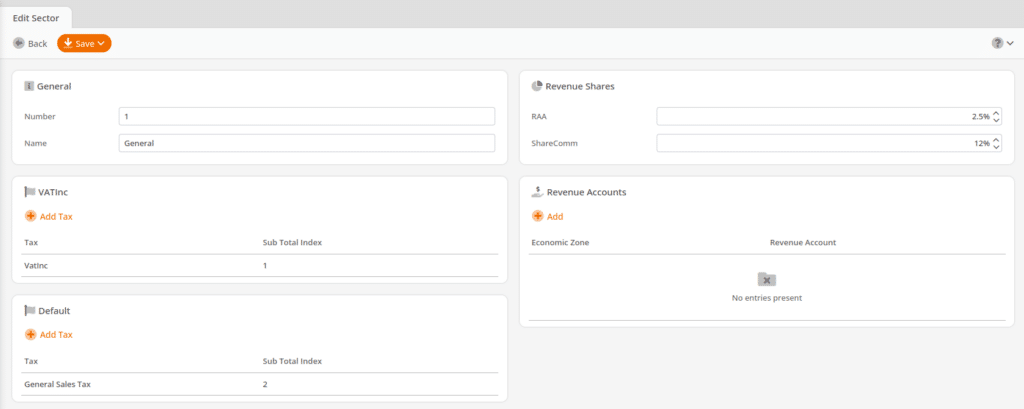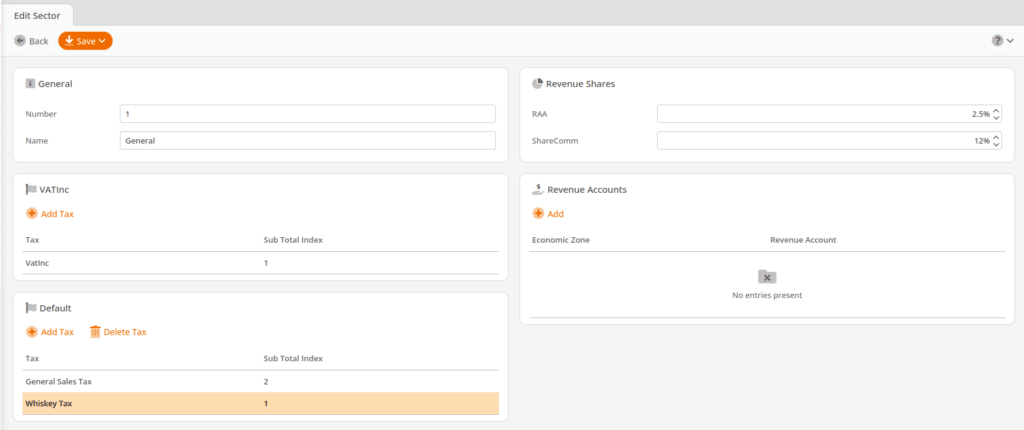Tax Set Up (Sectors ONLY)
Sectors consist of all applicable tax rates for a group of products and allow you to control how each of those rates will be calculated into the price of a product. So, all tax-free items would belong to the same Sector as would products that receive the regular sales tax. Products with the same taxation rules belong to the same Sector. (i.e., liquor, clothing, or food)
See the Tax Set Up page for a full list of instructions to get your taxes set up.
Create Sector:
- Once you have created your economic zones and set up all necessary tax rates, you are ready to create your sectors.
- In your KORONA.pos Cloud account (koronacloud.com), go to Settings > Sectors.
- Create and Name: Use the New button to add a sector and start by giving it a descriptive name to help you later identify this set of tax rules. (i.e., if this is a sector for products that receive a general sales tax only, consider naming it “General Sales Tax”).
- Add Tax Rates: After naming the Sector, you can add the appropriate tax rates. Remember, a sector is a set of tax calculations that will apply to products that need to be taxed in that particular way. Start by adding all of the applicable taxes.
- Set Subtotal Index: Then, to ensure that these taxes get calculated into the price of the product in the right way, you need to determine the subtotal index for each tax. The subtotal index determines the order in which the taxes are applied to the net price of the item.
- Set Revenue Shares: You will see a list of all revenue allocation accounts, and when you want to disburse a percentage of the revenue generated from products that belong to this sector, you can set the percentage right here.

Multiple Taxes per Sector
You may have multiple stores that need different Tax Rates to apply by location. Your Products can all share the same Sector, and you can add Tax Rates by Economic Zone.
This makes it so that regardless of where a product is rang out, it will always have the correct Tax for that geographical location (Economic Zone).
(See the example image to the right demonstrating multiple Taxes per Economic Zones.)



